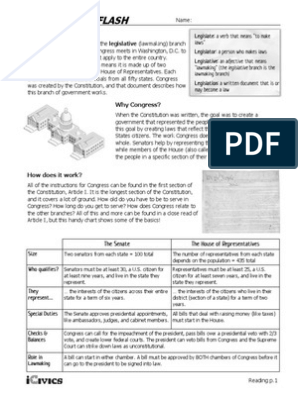0% found this document useful (0 votes)
41 views5 pagesClass Notes - How Congress Is Organized
Congress is the U.S. legislative branch, consisting of the House of Representatives and the Senate, which balances power and represents the American people. The House has 435 members serving 2-year terms, while the Senate has 100 members with 6-year terms, and both chambers utilize various committees to streamline the legislative process. Bills must undergo a multi-step process, including committee review and approval by both chambers, before being sent to the President for final approval.
Uploaded by
mangadownloader293Copyright
© © All Rights Reserved
We take content rights seriously. If you suspect this is your content, claim it here.
Available Formats
Download as DOCX, PDF, TXT or read online on Scribd
0% found this document useful (0 votes)
41 views5 pagesClass Notes - How Congress Is Organized
Congress is the U.S. legislative branch, consisting of the House of Representatives and the Senate, which balances power and represents the American people. The House has 435 members serving 2-year terms, while the Senate has 100 members with 6-year terms, and both chambers utilize various committees to streamline the legislative process. Bills must undergo a multi-step process, including committee review and approval by both chambers, before being sent to the President for final approval.
Uploaded by
mangadownloader293Copyright
© © All Rights Reserved
We take content rights seriously. If you suspect this is your content, claim it here.
Available Formats
Download as DOCX, PDF, TXT or read online on Scribd
/ 5
























































































